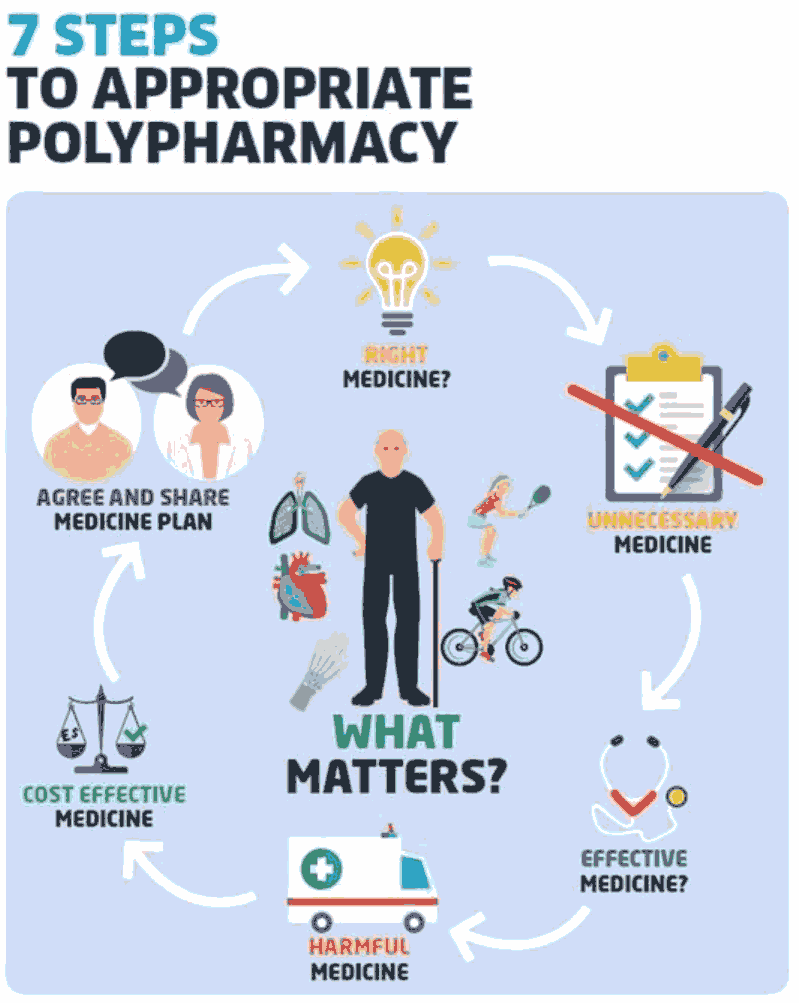Short Life Working Group On Prescription Medicine Dependence And Withdrawal: consultation
This consultation seeks views on the draft recommendations from the expert Short Life Working Group convened to make recommendations on addressing prescription medicine dependence and withdrawal.
Annex D - 7 Steps to Appropriate Polypharmacy

| Domain | Steps | Process | |
|---|---|---|---|
| Aims | 1. | What matters to the patient? | Review diagnoses and identify therapeutic objectives with respect to:
|
| Need | 2. | Identify essential drug therapy | Identify essential drugs (not to be stopped without specialist advice):
|
| 3. | Does the patient take unnecessary drug therapy? | Identify and review the (continued) need for drugs:
|
|
| Effectiveness | 4. | Are therapeutic objectives being achieved? | Identify the need for adding/intensifying drug therapy in order to achieve therapeutic objectives:
|
| Safety | 5. | Does the patient have ADR/Side Effects or is at risk of ADRs/Side Effects? Does the patient know what to do if they’re ill? |
Identify patient safety risks by checking for:
|
| Cost-effectiveness | 6. | Is drug therapy cost-effective? | Identify unnecessarily costly drug therapy by: Consider more cost-effective alternatives (but balance against effectiveness, safety, convenience) |
| Patient centeredness | 7. | Is the patient willing and able to take drug therapy as intended? | Does the patient understand the outcomes of the review?
|
Contact
Email: stuart.law@gov.scot
There is a problem
Thanks for your feedback